Since music is everywhere today, Bluetooth speakers have become necessary. You can enjoy great sound at a barbecue, on a trip or even at home and do it without worrying about messy cords or detailed equipment.
With new technology, Bluetooth speakers improve in features and sound which results in them being both more useful and nice-sounding than in the past. Let’s take a closer look today at what makes a Bluetooth speaker able to produce such amazing sound. Go ahead and look below at what makes your favourite music so special.
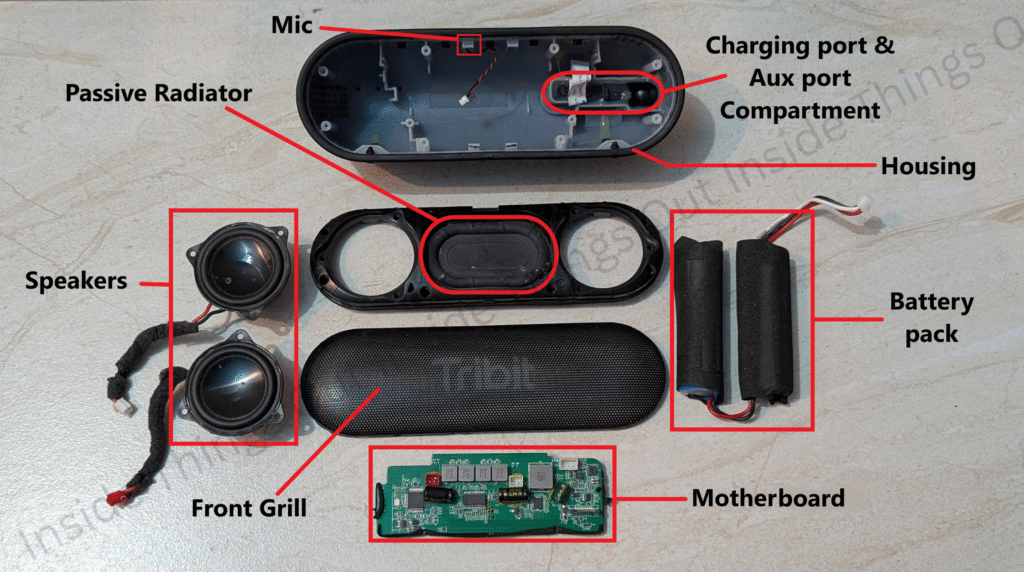
There are seven key components outlined below.
1) MotherBoard
Motherboard has various components, but we will discuss some of the important parts:
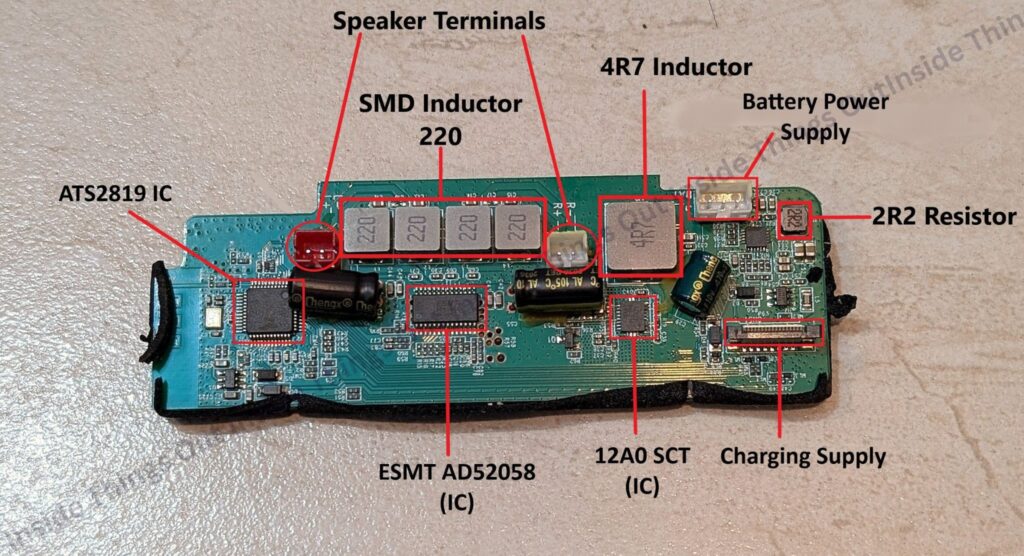
A) Integrated Circuits (IC’s)
i) ATS2819
The ATS2819 consists of a complete Bluetooth solution with audio features in one microchip. Moreover, it is capable of acting as both card speakers and card-reader for exchanging data. It unites a high-performance transceiver, a extensive feature baseband processor and Bluetooth audio support in the ATS2819.
This device meets Bluetooth V5.0 and also has compatibility with V4.2/2.1+EDR and Low Energy Controllers in dual mode.
At the same time, BR/EDR and LE may operate as real links between nations. This codec combines excellent performance with minimized round-trip delay by including high quality SBC decoder and CVSD encoding. Furthermore, it makes use of PLC technique and Adaptive Energy Control (AEC) to ensure top voice call sound quality.
ii) ESMT (Elite Semiconductor Microelectronics Technology Inc.) AD52058
AD52058 is a power efficient stereo class-D audio amplifier that allows voltage limit adjustment. A loudspeaker delivers its volume from a 4.5V to 14.4V supply. It has the capacity to put out 15W of power from each channel, keeping within 10% harmonic distortion plus noise, even on 12V.
With DC output detection, speakers are safe from constant current stress. With AD52058, you get top EMC results when there is no filter in the circuit. Auto-recovery is available for output short circuit and over temperature protection
iii) 12A0 SCT
With the SCT12A0, you get a high efficiency design where a fully integrated, 13mΩ high-side MOSFET and an 11mΩ low-side MOSFET enable 2.7V to 14V inputs and up to a 12-A switch current. The switch current limit can be changed by using an external resistor. The SCT12A0 is able to adapt c.
B) Inductor
An inductor is a simple electronic part that builds up energy stored as a magnetic field as current is sent through it.
i) 4R7 Inductor
Many electronic systems include an inductor with an inductance value of 4.7μH. The main responsibility of an inductor is to save magnetic energy needed by the circuit.
Common Applications:
- Buck/boost converters in power supply circuits
- Noise filtering
- DC-DC converter output filtering
- RF applications in some cases
ii) SMD Inductor (220):
An SMD (Surface-Mount Device) inductor marked as 220 typically means it has an inductance value of 22 µH (microhenries). The marking follows a standard code.
- The first two digits are significant figures.
- The third digit is a multiplier (number of zeros in picohenries).
Common uses:
- Power supplies (buck/boost converters)
- RF circuits
- Filters
- DC-DC converters
iii) 2R2 Resistor:
A 2R2 resistor is an important electronic part marked by its resistance of 2.2 ohms. The notation ‘2R2’ makes use of the letter ‘R’ to mark the decimal point, so it points out a resistance of 2.2 ohms which is frequent in various electronic circuits.
C) Capacitor
A capacitor stores electricity by placing electric charges on two closely set surfaces that do not touch one another due to their isolation.
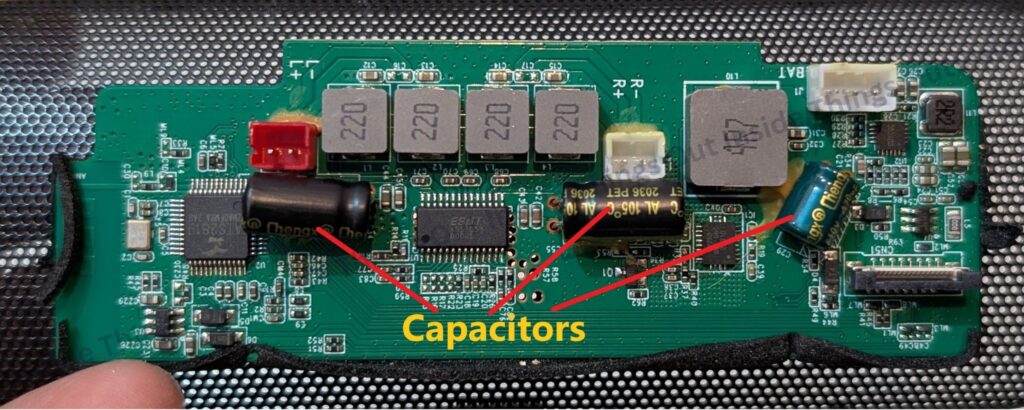
i) Power Supply Filtering / Stabilization
It connects between the battery and the internal circuits. Keeps the Bluetooth module, amplifier, and other components stable and prevents unwanted noise or drops in performance.
ii) Audio Signal Coupling
In the audio path between the amplifier and the speaker driver. Protects the speaker drivers from DC, which could cause damage or distortion.
iii) Tone and Frequency Filtering
In passive crossover circuits if the speaker has separate drivers or even in simple high-pass or low-pass filters. Helps enhance audio clarity by sending only the appropriate frequencies to each speaker driver.
iii) Timing / Reset Circuits
In circuits that manage system power-up, shutdown, or Bluetooth pairing delay functions. Controls how long the system waits before resetting or switching states.
2) Speakers/Drivers
It has 8-watt round drivers in the 2 to 3 inch diameter range.

3) Radiator
A passive radiator (PR) is a diaphragm that looks like a speaker cone but has no voice coil or magnet — meaning it doesn’t receive electrical signals directly. It’s mounted in the speaker enclosure alongside the active (powered) speaker driver.
In Bluetooth speakers with passive radiator technology are designed to enhance sound quality and bass response without compromising portability
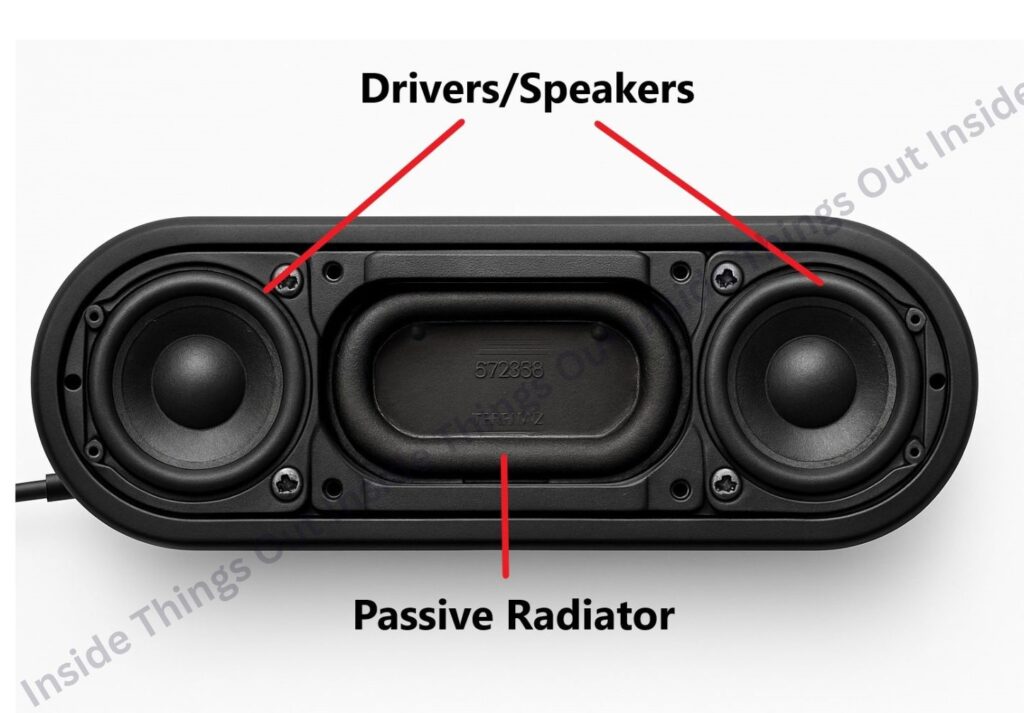
4) Battery
It contains a lithium-ion battery with a nominal voltage of 3.7V DC, a rated capacity of 4400mAh, and an energy rating of approximately 16.28Wh. The maximum (limited) charging voltage is 4.2V.
INR 18650 batteries, short for Lithium Nickel Manganese Cobalt Oxide (often referred to as NMC), are a type of rechargeable lithium-ion cell that utilizes a cathode composed of a blend of nickel (Ni), manganese (Mn), and cobalt (Co). This particular chemical composition significantly influences the battery’s energy density, thermal stability, safety, and overall performance.
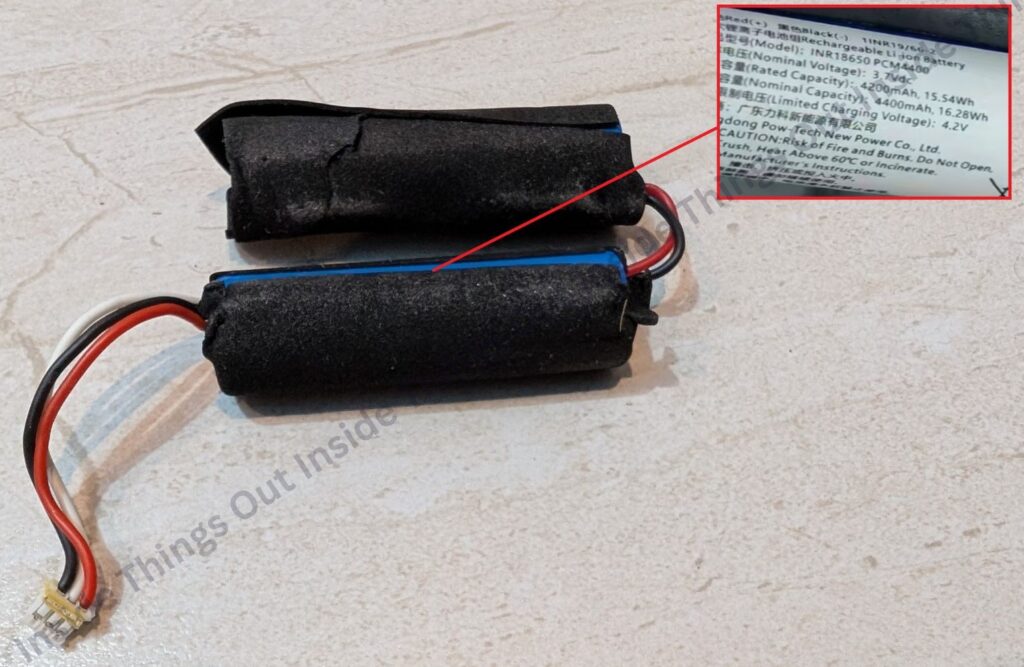
5) Charging & Aux Compartment
- Type-C Charging Port (or Micro-USB/Lightning in older models)→ This is where you plug in your charging cable to recharge the speaker’s internal battery.
- AUX Port (3.5mm jack)→ This allows you to connect devices (like phones, tablets, or computers) directly to the speaker using an AUX cable — handy if Bluetooth isn’t available or you want a wired connection.
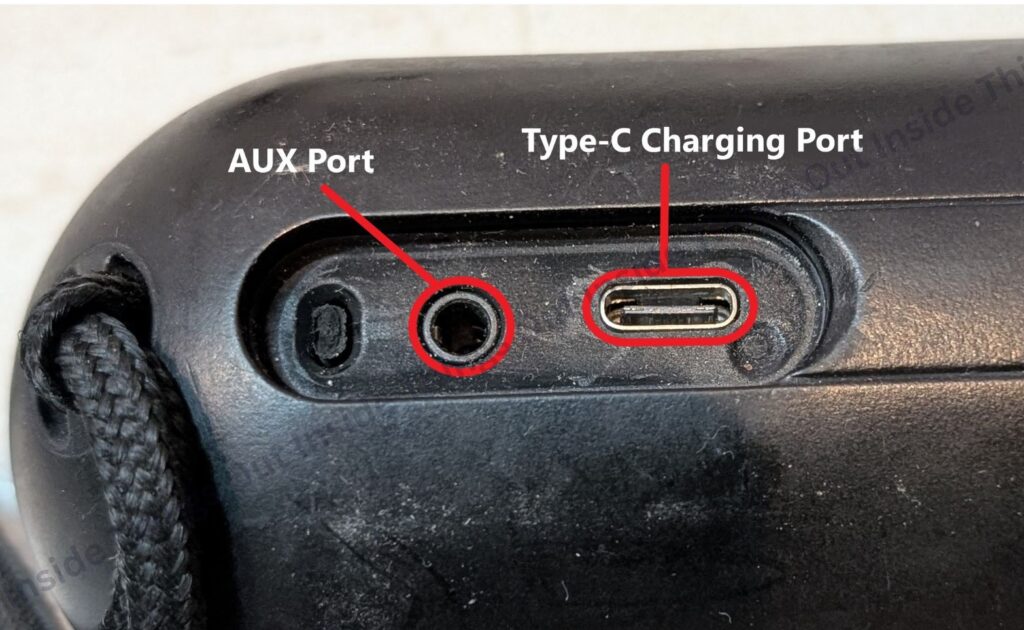
6) Microphone
The microphone is housed within a durable casing, often made from ABS or polycarbonate for protection. It is sealed with silicone gaskets around its port to prevent moisture and dust ingress, especially in waterproof designs. The mic component is designed to capture clear audio input while minimizing background noise and ensuring reliable performance in various environments.
7) Housing
This component is typically made from durable plastics such as ABS or polycarbonate, with rubberized or silicone-coated surfaces to enhance grip and improve impact resistance. Around the port area, gaskets are usually made of silicone or rubber, particularly in waterproof designs, to ensure a secure, watertight seal.
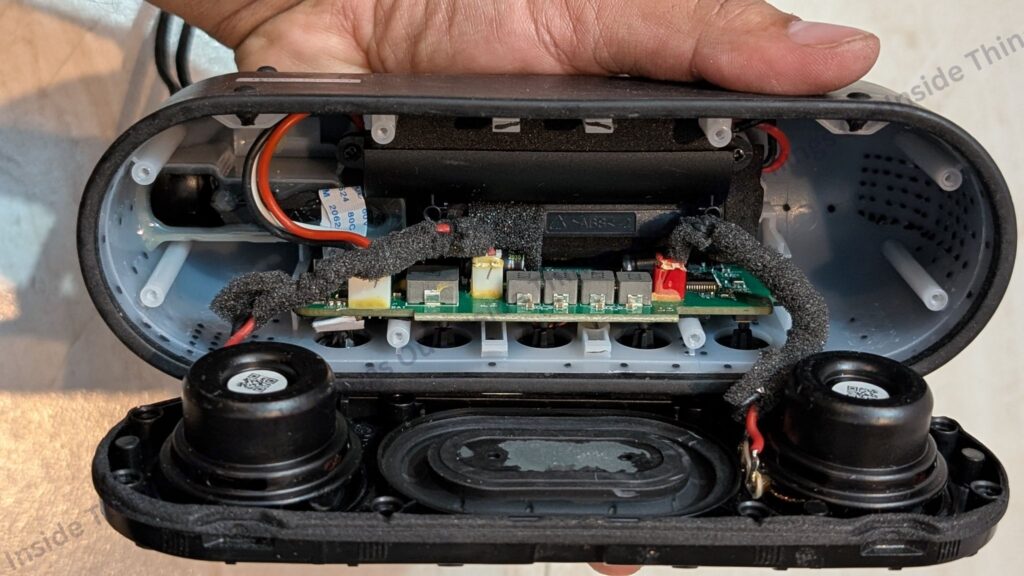
In conclusion, all in all, Bluetooth Speaker Kits deliver a fun way to listen to music wirelessly and in high sound quality. Their tiny build, nice appearance and versatile features have earned them a following among people into audio and those who love to build their own projects.
I wish you have some fun making this simple project and are now keen to build one of your own.
*****

